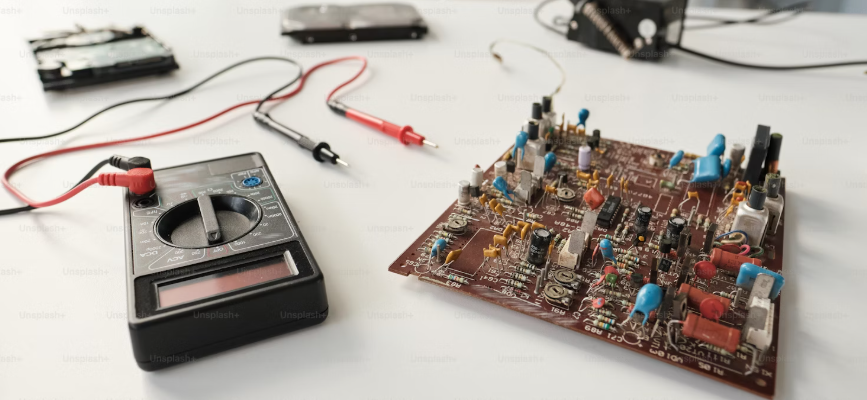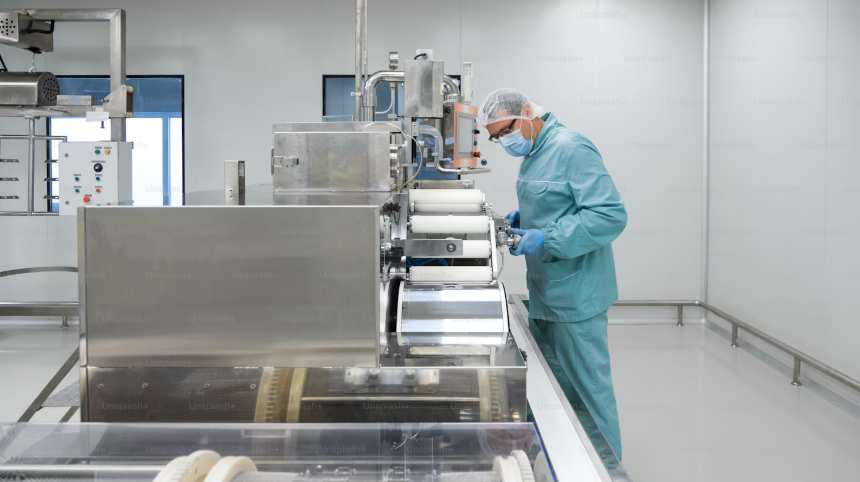Bringing a medical device to market involves more than just innovative design and engineering. Regulatory compliance is a cornerstone of success, ensuring that your product meets the safety, efficacy, and quality standards required by governing bodies worldwide. Understanding the nuances of medical device compliance can save time, money, and potential setbacks. This comprehensive guide will explore strategies, best practices, and insights to help you navigate medical device compliance with ease.
Table of Contents
What Is Medical Device Compliance?
Medical device compliance refers to the adherence to regulations, standards, and guidelines established by governing bodies to ensure that medical devices are safe, effective, and suitable for their intended use. Compliance requirements vary by region but generally involve:
- Design controls
- Risk management
- Quality management systems (QMS)
- Clinical evaluation
- Post-market surveillance
Here is the spreadsheet in a text-based format:
| Category | Insight | Action |
|---|---|---|
| Global Regulatory Knowledge | Understand country-specific device classifications (e.g., Class I/II/III in the U.S., CE marking in EU). | Create a regulatory matrix mapping classification requirements for your target regions. |
| FDA Submissions | Prepare pre-submission questions to clarify 510(k) or PMA requirements with the FDA. | Draft pre-submission documents with focused questions; schedule early FDA meetings. |
| European MDR Compliance | Adapt technical documentation for MDR’s strict clinical evaluation and UDI requirements. | Audit CER and UDI data quarterly to meet MDR standards. |
| Risk Management | Update risk matrices quarterly, integrating real-world performance data. | Conduct internal workshops to assess risk and update ISO 14971 processes. |
| Quality Management Systems (QMS) | Ensure ISO 13485 QMS is implemented during early product design stages. | Schedule bi-annual QMS reviews and train all teams in ISO compliance. |
| Clinical Evaluation and Testing | Pre-schedule biocompatibility tests and align clinical trials with intended claims. | Align clinical protocols with ISO 10993 and engage third-party validation labs. |
| Post-Market Surveillance | Use predictive analytics tools to anticipate adverse events and refine device features. | Implement adverse event reporting workflows using platforms like EUDAMED. |
| Audit Preparation | Create a detailed audit trail with complete records of design, production, and risk management. | Conduct mock audits and resolve any identified gaps proactively. |
| Design Controls | Maintain a comprehensive Design History File (DHF) for faster regulatory reviews. | Use cloud-based PLM tools to manage DHF updates in real-time. |
| Supplier Management | Establish multi-source suppliers for critical components to mitigate disruption risks. | Maintain supplier agreements for lead time guarantees and cost stability. |
| Digital Compliance Tools | Invest in QMS software like Greenlight Guru for automated documentation. | Adopt tools like MasterControl to digitize medical device compliance management. |
| Regulatory Strategy | Engage regulatory consultants with expertise in specific device classifications. | Vet consultants with proven approval records in relevant categories. |
| Cost Optimization | Use modular designs to reduce costs associated with redesigns for different markets. | Plan for scalable components and negotiate supplier contracts for economies of scale. |
| Emerging Market Compliance | Research unique medical device compliance needs for markets like China (e.g., CCC certifications). | Collaborate with local regulatory bodies for smooth market entry. |
| Regulatory Training | Provide cross-functional teams with regular updates on global regulatory changes. | Host monthly medical device compliance webinars and workshops to keep teams informed. |
1. Understand Global Regulatory Frameworks
United States: FDA Regulations
The FDA classifies devices into three categories based on risk:
- Class I: Low-risk devices (e.g., tongue depressors).
- Class II: Moderate-risk devices (e.g., infusion pumps).
- Class III: High-risk devices requiring premarket approval (e.g., pacemakers).

Key pathways for FDA compliance:
- 510(k): Demonstrating substantial equivalence to a predicate device.
- De Novo: For novel devices with no existing predicates.
- PMA (Premarket Approval): Required for Class III devices with extensive clinical evidence.
European Union: MDR (Medical Device Regulation)
The EU’s MDR focuses on stricter clinical evaluation and post-market surveillance. Key elements include:
- Unique Device Identification (UDI)
- Clinical Evaluation Reports (CER)
- Risk management throughout the product lifecycle.
Other Regions
- Canada: Health Canada’s Medical Device Regulations (CMDR).
- Asia-Pacific: Countries like China and Japan have distinct regulatory frameworks that require early planning.
2. Implement a Robust Quality Management System (QMS)
A QMS is the backbone of medical device compliance. It standardizes processes, ensures traceability, and streamlines audits.
ISO 13485: The Gold Standard
ISO 13485 is an internationally recognized standard for QMS in medical devices. It covers:
- Design controls
- Risk management
- Document control
- Supplier management
Key Steps for QMS Implementation
- Gap Analysis: Identify medical device compliance gaps in your current processes.
- Document Control: Maintain updated and easily accessible documentation.
- Training: Regularly train employees on QMS processes.
- Audits: Conduct internal and external audits to ensure continuous improvement.
3. Prioritize Risk Management
Risk management is integral to medical device compliance, helping identify, mitigate, and monitor potential hazards.
ISO 14971: Risk Management for Medical Devices
ISO 14971 provides a structured framework for:
- Identifying risks throughout the product lifecycle.
- Assessing the probability and severity of risks.
- Implementing controls to mitigate risks.
Practical Tips
- Conduct a Failure Mode and Effects Analysis (FMEA) to predict potential issues.
- Update risk management files at every stage of product development.
- Use real-world feedback post-market to refine risk assessments.
4. Ensure Regulatory-Compliant Design Controls
Design controls ensure that medical devices meet user needs and regulatory requirements.
Key Design Control Steps
- User Needs: Define what the device must do.
- Design Inputs: Translate user needs into measurable requirements.
- Design Outputs: Develop specifications and engineering drawings.
- Design Verification and Validation: Verify that the design meets requirements and validate its performance.
Tips for Streamlining Design Controls
- Use digital tools like PLM (Product Lifecycle Management) software.
- Involve cross-functional teams early in the design process.
- Maintain a Design History File (DHF) as a central repository of design records.
5. Clinical Evaluation and Testing
Clinical evaluation demonstrates the safety and efficacy of your device based on preclinical and clinical data.
Clinical Evaluation Report (CER)
A CER is required in the EU under MDR and involves:
- Literature reviews.
- Clinical investigations.
- Post-market clinical follow-ups (PMCF).
Testing Best Practices
- Perform preclinical testing for mechanical, electrical, and software reliability.
- Conduct biocompatibility testing per ISO 10993 for patient-facing devices.
- Use third-party labs to ensure unbiased results.
6. Leverage Digital Tools for Compliance
QMS Software
Tools like Greenlight Guru and MasterControl automate medical device compliance documentation and audit readiness.
Regulatory Intelligence Platforms
Stay updated with global regulatory changes using platforms like Regulatory Globe or RAPS.
7. Prepare for Audits
Audits are a critical component of compliance, ensuring that your processes meet regulatory standards.
Internal Audits
- Schedule regular audits to identify and resolve compliance gaps.
- Use checklists tailored to ISO 13485 and regional regulations.
External Audits
- Conduct mock audits to prepare for inspections by regulatory bodies.
- Designate a compliance team to liaise with auditors.
8. Plan for Post-Market Compliance
Compliance doesn’t end after product launch. Post-market surveillance is crucial for maintaining regulatory approval.
Requirements
- Collect real-world data on device performance.
- Report adverse events to regulatory bodies.
- Update risk management files based on post-market insights.
Tools
Use tools like MedWatch (FDA) or EUDAMED (EU) for adverse event reporting and tracking.
Common Compliance Pitfalls
- Neglecting Documentation
Lack of organized documentation can derail audits and regulatory submissions. - Underestimating Risk Management
Skipping risk management can lead to safety issues and product recalls. - Delaying QMS Implementation
Implementing QMS late can result in costly redesigns.
Conclusion
Medical device compliance may seem daunting, but with a structured approach, it becomes a manageable and integral part of your product development journey. From understanding regulatory frameworks to implementing robust quality systems and post-market surveillance, the key to success lies in proactive planning and execution.
By aligning your processes with international standards like ISO 13485 and ISO 14971, leveraging digital tools, and maintaining clear documentation, you can navigate the complexities of compliance with confidence.
For a deeper dive into medical device engineering and its role in commercialization, check out this comprehensive guide on optical medical device development. It explores practical strategies to bring innovative devices to market effectively.
Are you ready to simplify your medical device compliance journey? Let’s collaborate to ensure your product meets global standards efficiently and effectively.




 430 Park Ave, New York, NY 10022, USA
430 Park Ave, New York, NY 10022, USA Paevalille tn 6, Office 84, Estonia, Tallinn, 13517
Paevalille tn 6, Office 84, Estonia, Tallinn, 13517 Barykadna St 7, Dnipro, Ukraine, 49000
Barykadna St 7, Dnipro, Ukraine, 49000